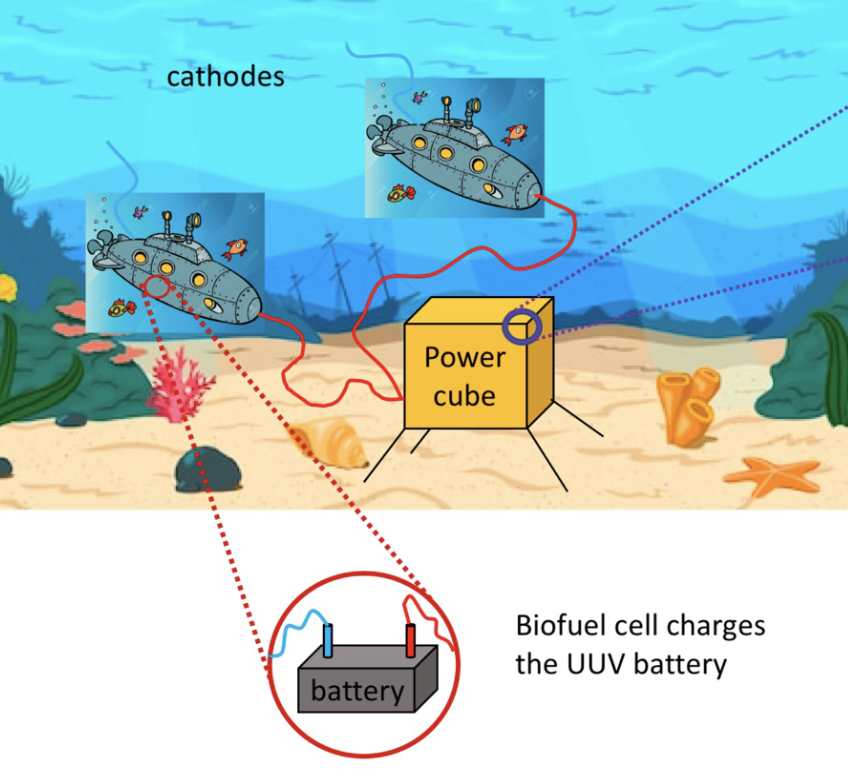Background and Significance - Advanced Warfighter Technologies Laboratory
Background and Significance
The US Navy’s 30-year R&D plan heavily emphasizes surface and underwater fleets of drones, called USVs (unmanned surface vehicles) and UUVs (unmanned underwater vehicles). The motivation is a series of advantages, as unmanned systems are very cost-efficient, can be deployed in principle in large numbers, avoid/minimize the exposure of human personnel to enemy action, and can potentially cover very large operational areas in terms of a variety of missions, such as reconnaissance, areal denial, and maritime control.
Such fleets, however, would require their own logistics chain. A typical UUV would require recharging every 12 to 24 hours of operation. Additionally, UUVs tend to have a relatively low cruising speed, which combined with duration of autonomous operation produce a relatively small operational radius. To remain operational and on point, the UUV must then be recharged locally, reliably, and frequently. This must be done for all UUVs in the operational area, which itself would be relatively small, due to the small range of each UUV. Finally, large theaters of operation would require many such sub-areas to be controlled and resupplied individually.
These factors produce a nightmarish logistics problem, which may be physically tractable by large numbers of recharger vehicles but would also be prohibitively expensive. A possible alternative is to use nuclear manned vessels as recharging stations, but each such vessel is extremely valuable and better used elsewhere, while a recharging mission will significantly reduce the stealth of such an asset and increase risk/exposure for its human crew. It is safe to say that such a solution would ultimately be impractical.
An alternative approach is to use some form of renewable energy that is obtained locally. Then a distributed network of such automated power stations can be used as permanent infrastructure for the UUVs in that area of operations. Each UUV can be programmed with the locations of a small number of power stations, so that if one or two stations get destroyed, the UUV will redirect to the next ones on the
list. If done correctly, the station assignment can give the overall system a very large degree of robustness and flexibility. This can be an elegant solution to the logistics and security problem, but it must be doable from the perspectives of physics and engineering as well. Then the question becomes what the source of that renewable energy would be.
One option for a power source is geothermal, e.g. using turbines or Sterling engines near underwater thermal vents. This might work well locally, but it is clearly limited only to locations with such vents. As the purpose is to come up with a universal standard solution, geothermal is simply not sufficiently widespread to serve such a purpose.
More recently, significant work has been done in the direction of biofuels as a form of renewable power source. In particular, benthic bacteria are microorganisms living in the dirt at the bottom of the sea. As part of their living processes, they output electrons, which if harnessed through a circuit to a sink in the water, will output electrical energy. Typically, such biofuel cells include some form of an electrode that contacts an area saturated with benthic bacteria, so the ejected electrons have an electrical pathway to the load circuit.

The conceptual schematic above shows the basic idea of the projected utilization of benthic biofuel cell power stations. Essentially, the UUV battery will be the load through which the
These biofuel cell technologies are still a long way from ubiquitous fruition and widespread application, but they already have shown power outputs of ~20
mW/m2. This may sound unimpressive compared to standard loads of domestic appliances, e.g. 1 kW for a microwave oven or a medium-sized TV, until it is realized that the power output is rated by area. It then becomes evident that increasing the effective electrode area and increasing the power per unit area are independent and equally valid approaches to increasing the overall power output. So, benthic bacterial biofuel cells carry the promise of an efficacious and cost-effective solution to the drone logistics problem.
